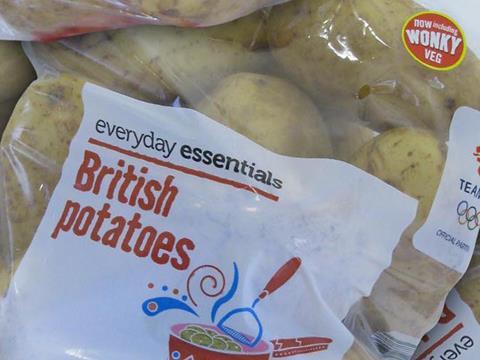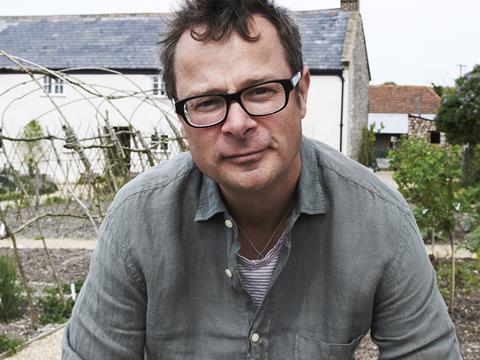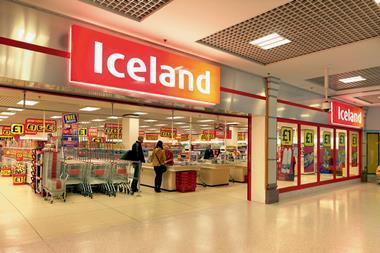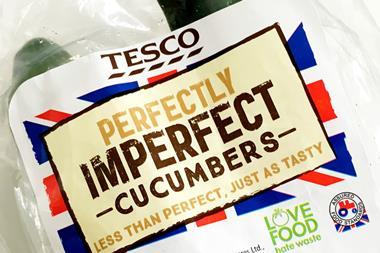The Grocer’s Waste Not Want Not campaign has lifted the lid on the scandalous levels of waste in the food industry. But many retailers and suppliers are now raising their game. Next month we’ll be releasing our ranking of the top 10 suppliers but for our Green Issue we’ve looked at the UK’s 10 largest retailers to track how well they’re doing in the war on waste…

Tesco’s turnaround isn’t just a financial one. The fact is, it’s putting its rival retailers to shame on food waste.
Even before the arrival of Dynamic Dave in 2014, it was the only supermarket to publish independent food waste figures, laying down a gauntlet that even two years later no retailer has had the guts to pick up.
This year it went further, publishing research into the weak spots in the supply chain for 25 of its most popular foods.
Transparency might be a double-edged sword – with the mult forced to admit waste had slightly increased in the last financial year to 59,400 tonnes – but its openness has also been publicly applauded.
It’s also set an ambitious target to redistribute all store surplus by 2017, while the national roll-out of its innovative Food Cloud app in 2016 has allowed more than 1,200 charities to team up with Tesco branches across the UK – a huge achievement.
Leading the charge on a national – and international – stage is CEO Dave Lewis. The Tesco boss has worked personally at United Nations level to develop policies on tackling waste, before impressing his peers (p34) in an address on progress to date at the Consumer Goods Forum this year.

Sainsbury’s has been “pioneering” on the issue of food waste, said our experts, co-founding FareShare in 1994 and lending vital support to the charity in its early days. It was also the first to officially encourage its suppliers to team up with the organisation and has been a consistent provider of surplus ever since, providing 980 tonnes in 2014/15 alone. At store level it has made rapid progress in recent months too, setting up more than 1,000 partnerships between local charities and its branches, an increase of 350% since October 2015 alone, via its Food Donation Partners scheme.
It’s also done valuable work in raising awareness among customers, launching Waste Less, Save More last year, a £10m campaign to help people cut waste in their own homes.
But the mult has “transparency issues” according to one expert. Although it broke new ground in 2011 by publishing its food waste data for the first time, it has since remained schtum, only sharing figures via the BRC’s combined figure. Not only should it follow Tesco’s lead and reconsider this position, “it needs to shout louder and prouder about all its efforts” both to push its rivals harder and help keep waste in the public profile.

In its Plan A, Marks & Spencer opted to keep redistribution local across stores rather than use a centralised process and though scaling up at a slower pace than some rivals, it has now established 500 partnerships with local charities to redistribute back-of-store surplus via social network Neighbourly, and claims to be the only major retailer providing live updates on the tonnes it’s sending out (353 since October 2015).
It was also given the green light in July 2016 to roll out a trial freezing food for local charities and via this hopes to redistribute much more in future.
Along with a zero waste-to-landfill policy, it has committed to cut surplus sent to AD by 20% by 2020 and annual results show it’s already halfway there.
And it’s thrown itself into the wonky veg arena with new lower-spec strawberries, carrots and parsnips, and is “constantly reviewing products and standards”.
It remains selective with data, though, and – despite live updates on redistribution – still refuses to share overall waste figures or hot spot data.


“Increasingly collaborative and supportive” Aldi has accelerated its efforts to tackle food waste, according to our experts. A burgeoning relationship with FareShare led to a 94% increase in food sent to charity, up from 32 tonnes per year in 2012 to 63 in 2015. Since October 2015 more than 40 tonnes has also been sent to Company Shop.
Store managers are handed individual targets to reduce waste and Aldi says it “agrees clear seasonal or annual programmes” with suppliers to ensure that “what’s grown matches our needs”.
Experts also praised its transparency on the success of some imperfect fruit & veg trials (reportedly saving 34,000 tonnes of misshapen potatoes).
But it’s early days for the discounter, which is still building its sustainability profile after a meteoric rise to success, and it can’t yet match the network of some of its more established rivals. It doesn’t publish waste figures or contribute to the BRC’s combined figure. And it’s also yet to engage fully in the public debate, with no clear efforts to drive broader industry change.

As far back as 2014 Asda was convinced that a few “knobbles and blemishes” on fruit & veg wouldn’t put off customers. It began “flexing” specifications for suppliers and extended shelf life on core ranges before launching its Beautiful on the Inside range of misshapen carrots, pears and spuds in January 2015.
Its efforts were championed by chef Jamie Oliver later that month who praised the mult and challenged all retailers to follow suit. And they have, with nearly all major mults embracing wonky fruit & veg with their own imperfect ranges.
From a trial of only five stores, Asda’s own scheme has now been rolled out to 550 branches and earlier this year it launched £3.50 Wonky Veg boxes across hundreds of stores with 32,500 sold between February and April alone.
It’s also worked with FareShare for three years, redistributing 1,785 tonnes between 2013 and 2016, and launched a ground-breaking initiative in March 2015 that helps its suppliers fund the transport costs of redistribution, too.
The US-owned supermarket can be hazy on details, though. It lacks published targets or data on its waste (although it says it measures waste daily) and it hasn’t followed the likes of Aldi in spelling out what produce its Wonky Veg scheme has saved or from where in the supply chain.

The Co-op has taken big strides forward in saving surplus from its distribution centres in the last 12 months. After redistributing from only a few of its DCs, it rolled out a national scheme across all nine in 2015 after a successful trial in Derbyshire, and now supplies yoghurt, meat, fruit & veg and ready meals to FareShare on a far bigger scale. That change pushed up the total redistributed from 84 tonnes in 2014 to 306 last year – an increase of 264%. In 2016 it aims to go further and redistribute 420 tonnes, or one million meals.
But slow progress with back-of-store surplus leaves it some way off its lofty ambition to ensure “no food fit for consumption goes to waste”.
A trial with the Real Junk Food Project to redistribute food from Leeds stores has only extended to eight of its 2,800 UK branches (or 0.3%) so far and a new pilot teaming up with 11 community groups is only active in seven.
That’s frustrating, given the potential. From only those eight Leeds stores around 20 tonnes of edible food has been redistributed since the start of 2016, with some reducing the amount of leftover food in-store by as much as 50%. If the Co-op had rolled out the scheme to only a quarter of its stores, it could’ve rescued 280 tonnes by now.

Waitrose blows a bit hot and cold on food waste. Its Forgotten Cuts range of meat has been “hugely successful”. But it was late to the party on wonky veg: nine years ago it started selling weather-blemished apples (and later pears, potatoes and green beans) but the initiative has only ever been used if harvests have been severely compromised. And having finally launched its ‘A little less than perfect’ range in February, this still involves only a handful of lines.
Similarly it says it’s sending zero waste to landfill and only opts for AD as a “last resort”. But it doesn’t track the amount of food that is wasted. As one expert says: “If you don’t measure it, you can’t manage it.”
True, it “measures food donations and AD collections”. But comparative success is hard to measure given Waitrose tracks it by value not volume (it tells The Grocer it has donated £514,971 of food in the past six months). It also lacks a national redistribution network, instead allowing branches and DCs the freedom to find a local solution that works for them, which has led to slow progress in some areas.


Few supermarkets have come under attack for wasting food like Morrisons. Hugh Fearnley-Whittingstall (pictured) led the charge in November last year, branding its efforts “pathetic” and planting himself (and several cameras) in front of one store to hand out wonky parsnips he claimed the mults’ exacting standards had left rotting in a farmer’s field
To Morrisons’ credit, it reacted. Fast. Before the show even aired it had announced a commitment to redistribute all unsold food, with a potential for four trolleyloads a week to be sent to local charities from each store, reclaiming valuable column inches and upping its own efforts considerably to tackle in-store waste. The programme saw 720 tonnes donated between February and July this year.
But doubts remain on the coherency of Morrisons’ plan going forward. Though a “brilliant” scheme, one expert said the redistribution commitment looked to some like a “fluffy cover-up” for “far deeper issues of prevention”, with little movement across the mult’s supply chain and a reactive, rather than proactive approach.
There is no doubt the retailer is better placed than most to tackle waste given its vertically integrated structure, but caught on the hop by an incensed HFW, experts remain concerned that Morrisons still appears to lack a clear long-term plan.

Exponential growth doesn’t come without sacrifices and while Lidl boasts double-digit sales growth it hasn’t put food waste at the top of its to-do list, lacking either a national strategy on redistribution or reduction targets. It does say it’s looking to address the gaps, though. Three “exciting pilot redistribution programmes” are taking place with a view to building “a consistent and national approach”. It is also conducting an “extensive root cause analysis” to understand the causes of waste in its supply chain.
Details are few and far between, though. It’ll only say its food waste is “minimal” (although it measures across both stores and DCs) and the particulars of any pilot programmes on food redistribution aren’t spelled out. If the discounter doesn’t want to be accused of playing catch-up with Aldi once again, it needs to step up its efforts and turn some of its good intentions into action.

Freezing food may be inherently less wasteful than fresh but that isn’t an excuse for Iceland. With shrinkage at 0.5% thanks to long shelf-life products, the retailer starts at an advantage and then fails to capitalise.
No scheme is currently in place to redistribute food from either DCs or stores, with all waste segregated and collected for disposal via AD instead. It has “proved difficult to arrange” thanks to a large portfolio of small stores each generating small amounts of surplus”, says the retailer, leaving it “logistically and economically difficult to arrange”.
Though it deserves plaudits for raising awareness via its Power of Frozen marketing campaign, it has remained largely quiet publicly on this increasingly high-profile issue.
All of which leaves it floundering at the bottom of our rankings.



















No comments yet